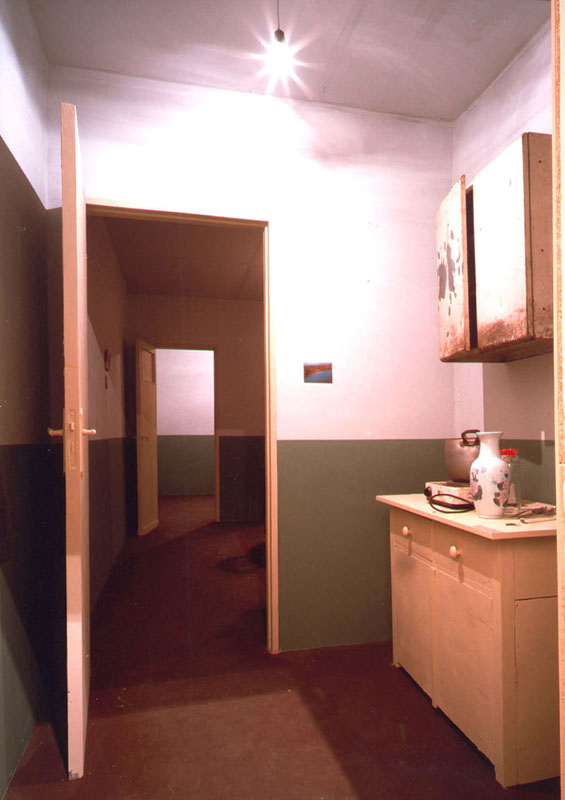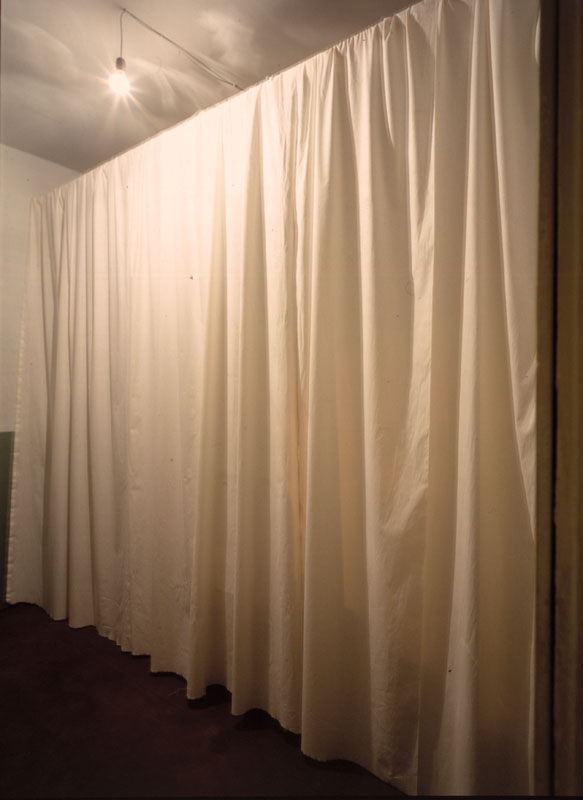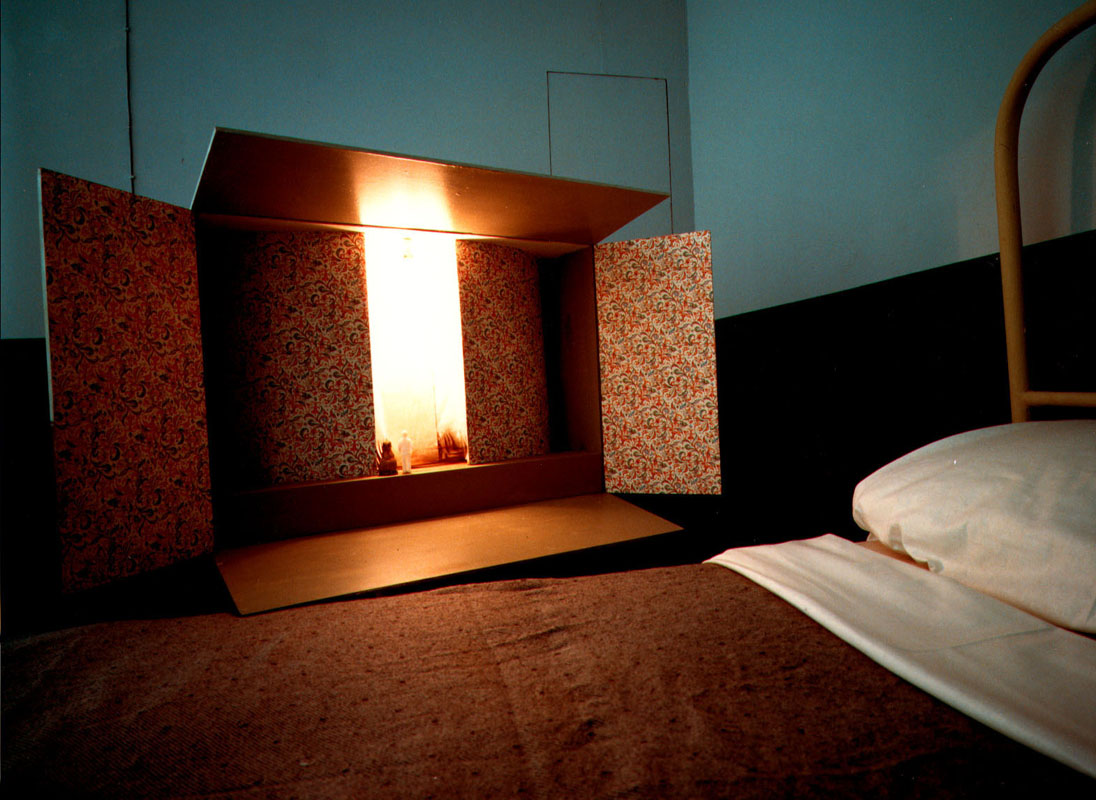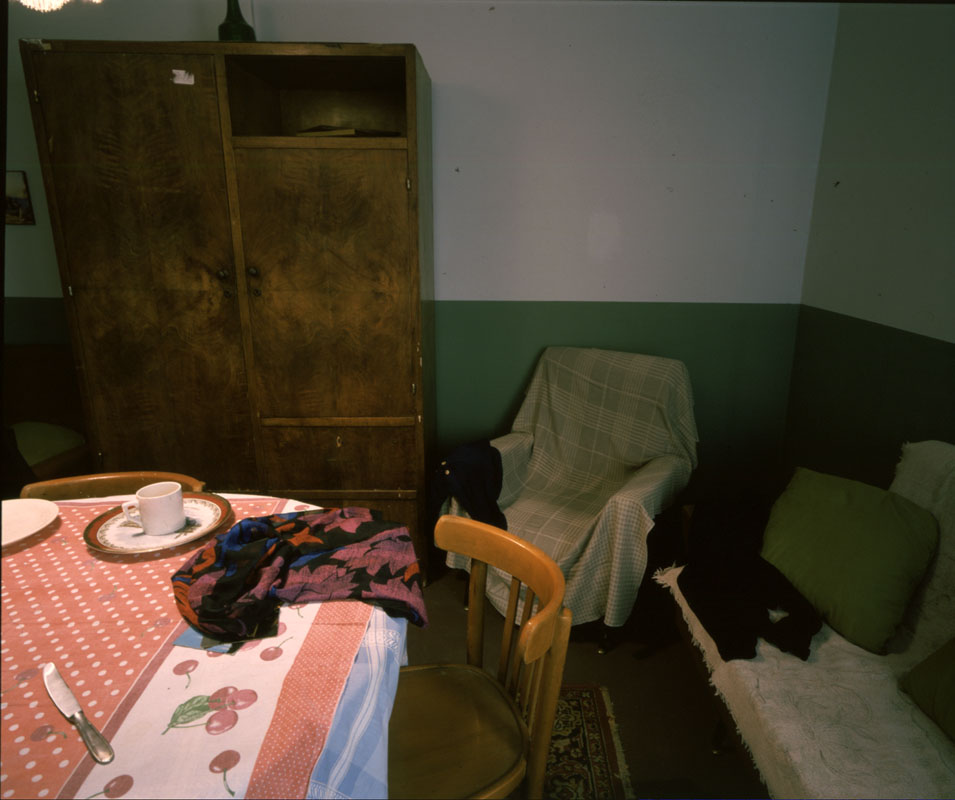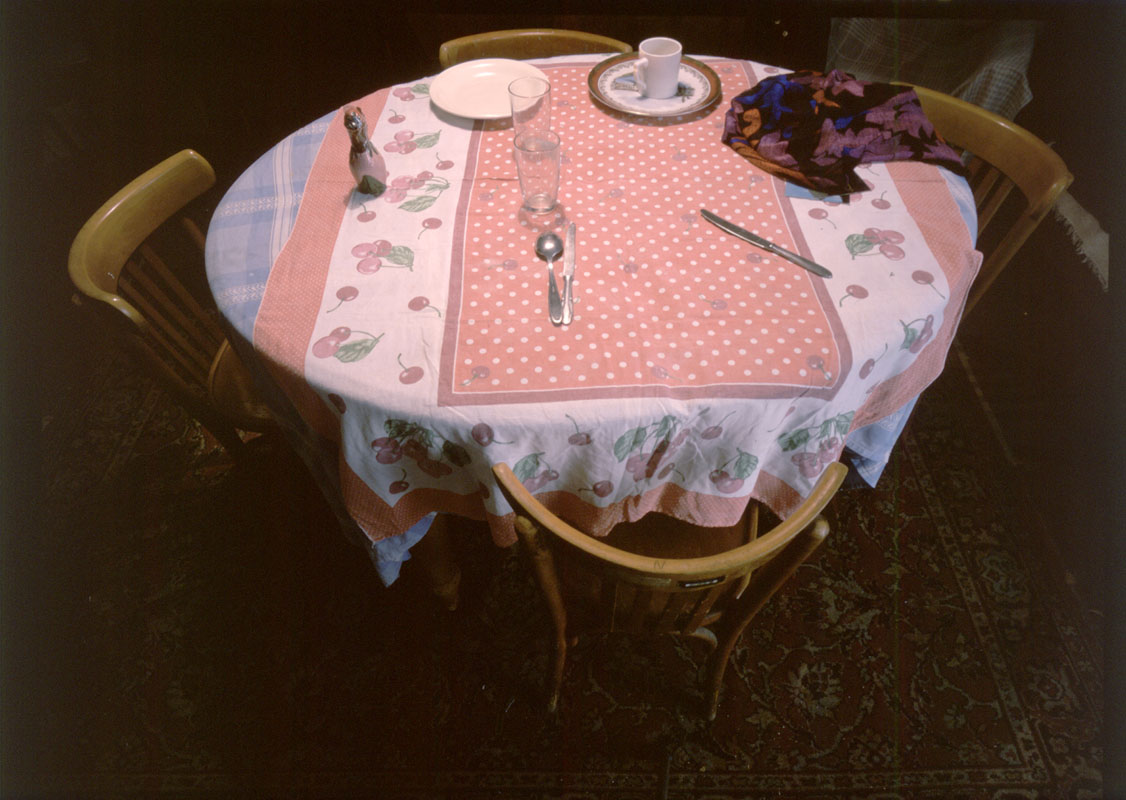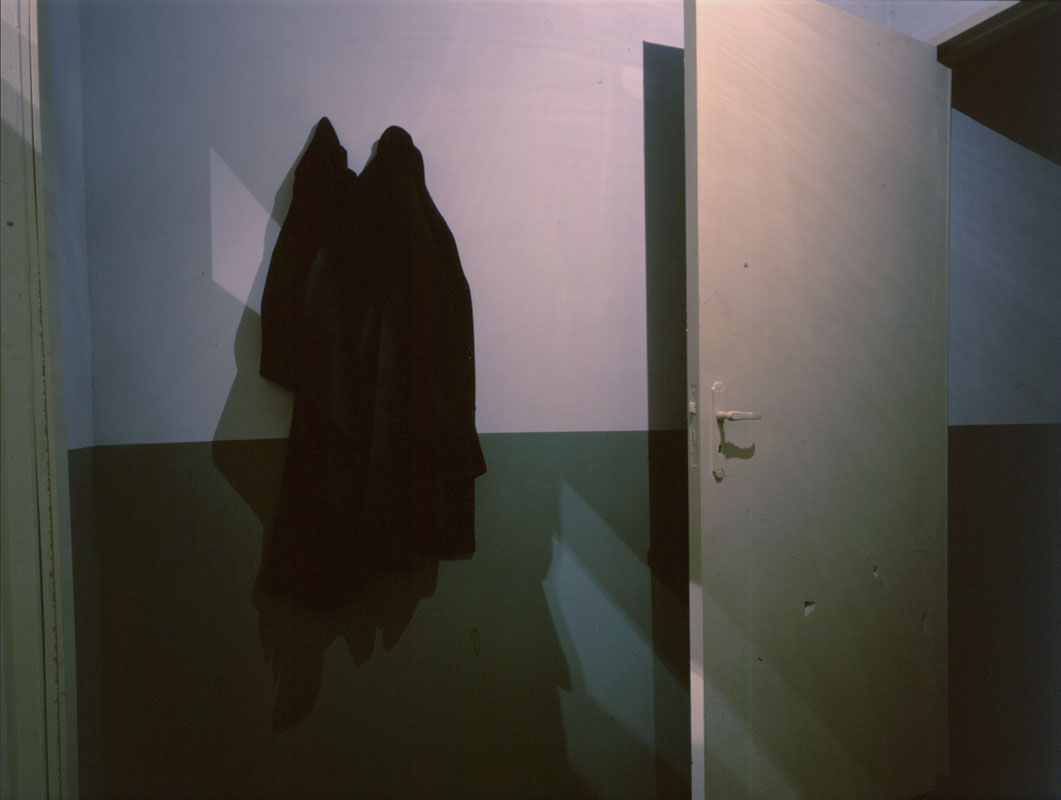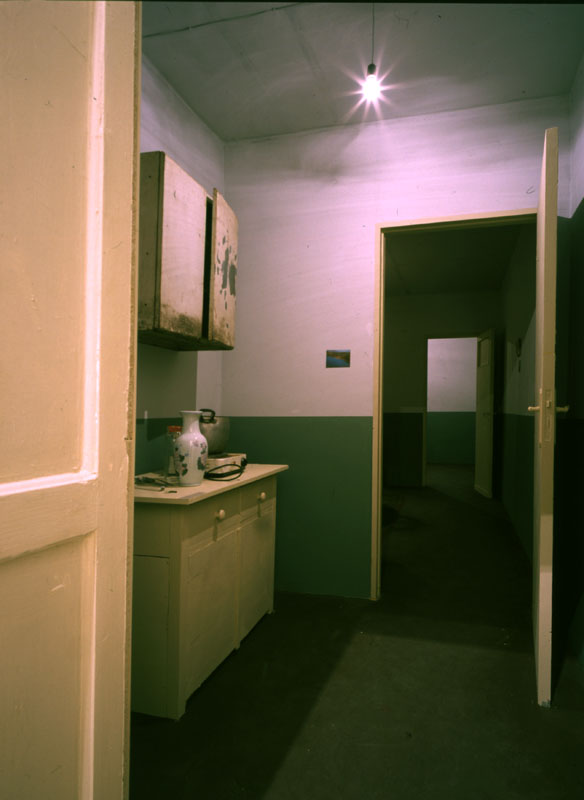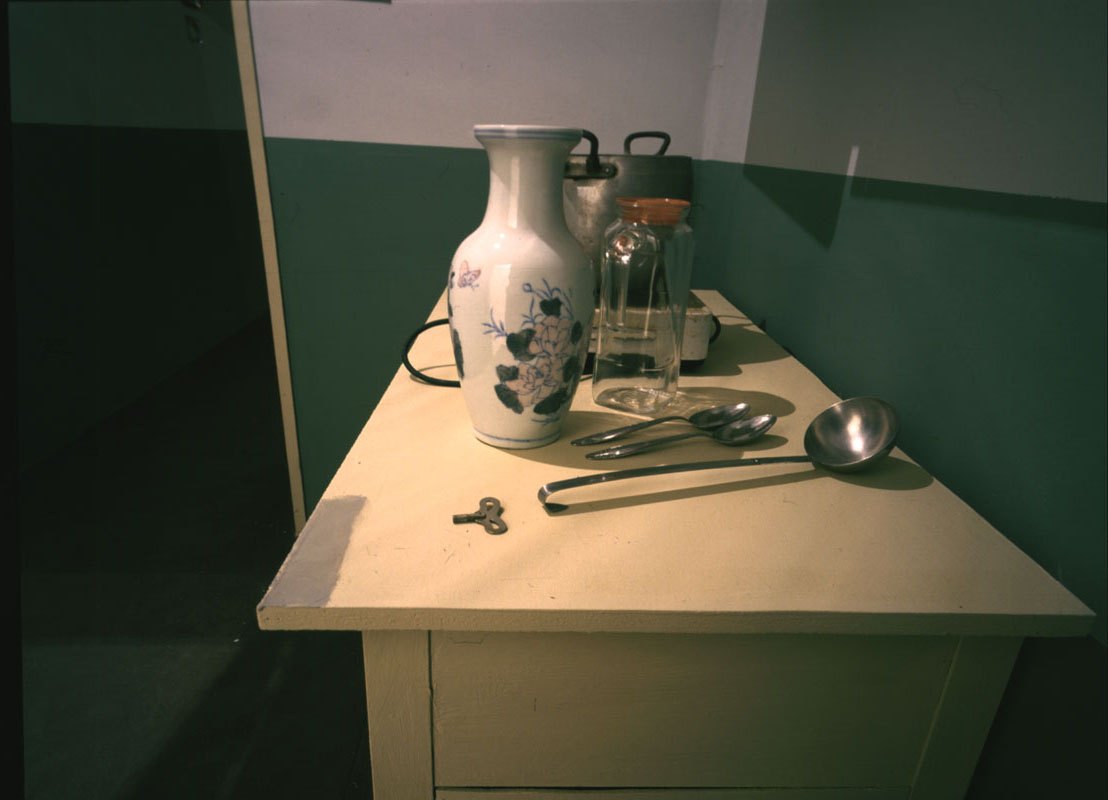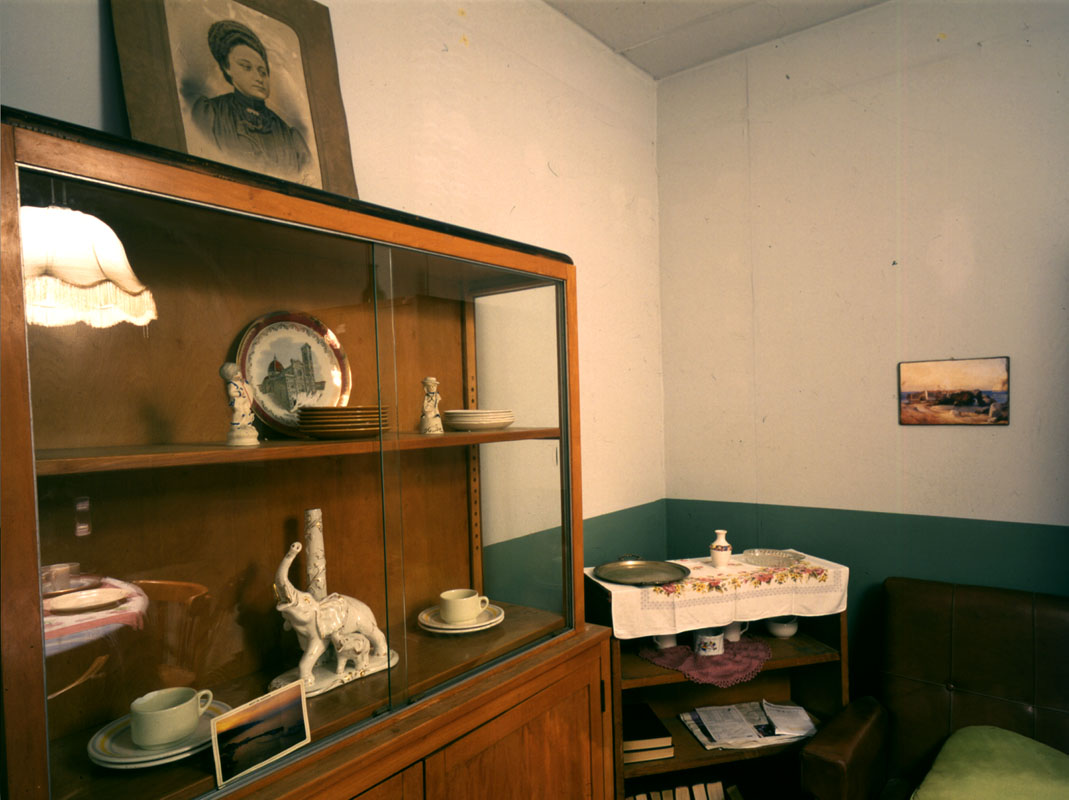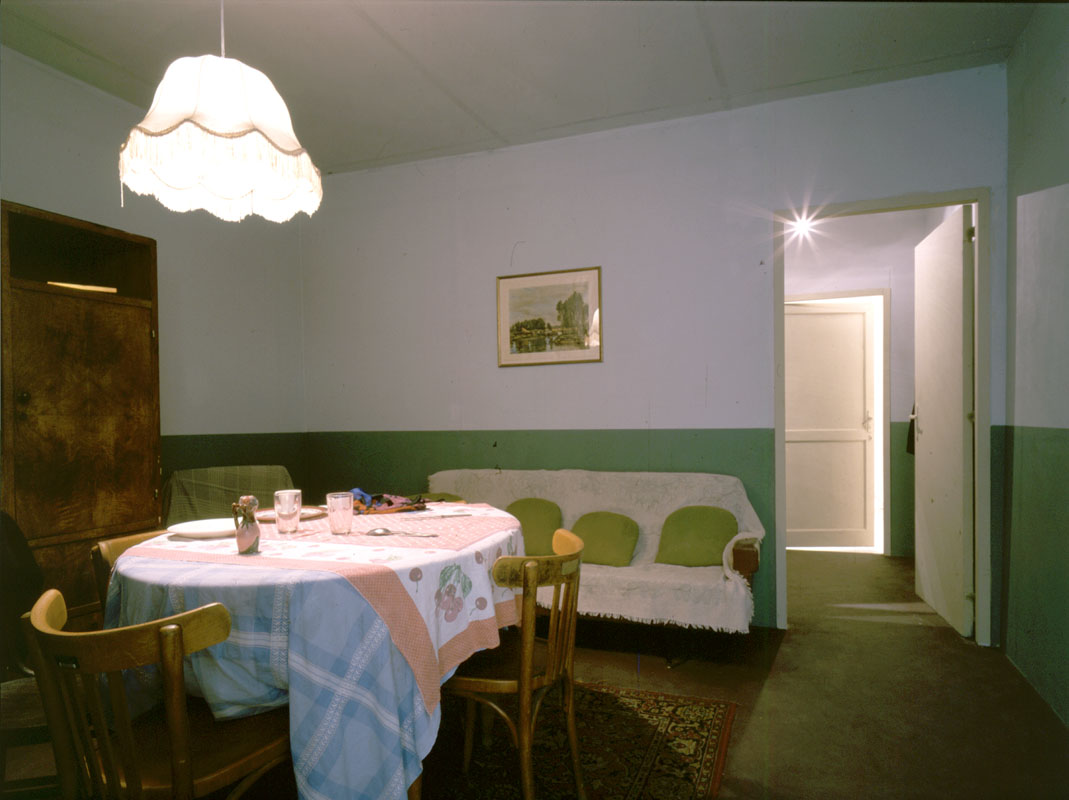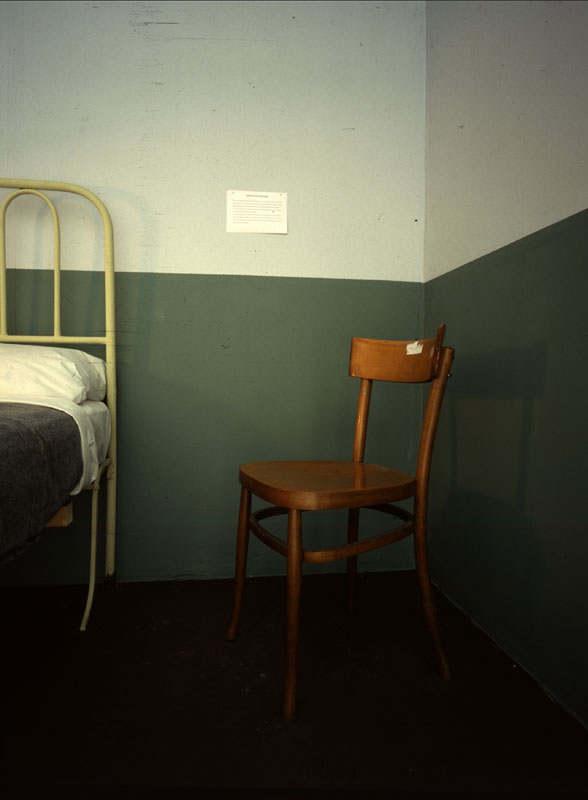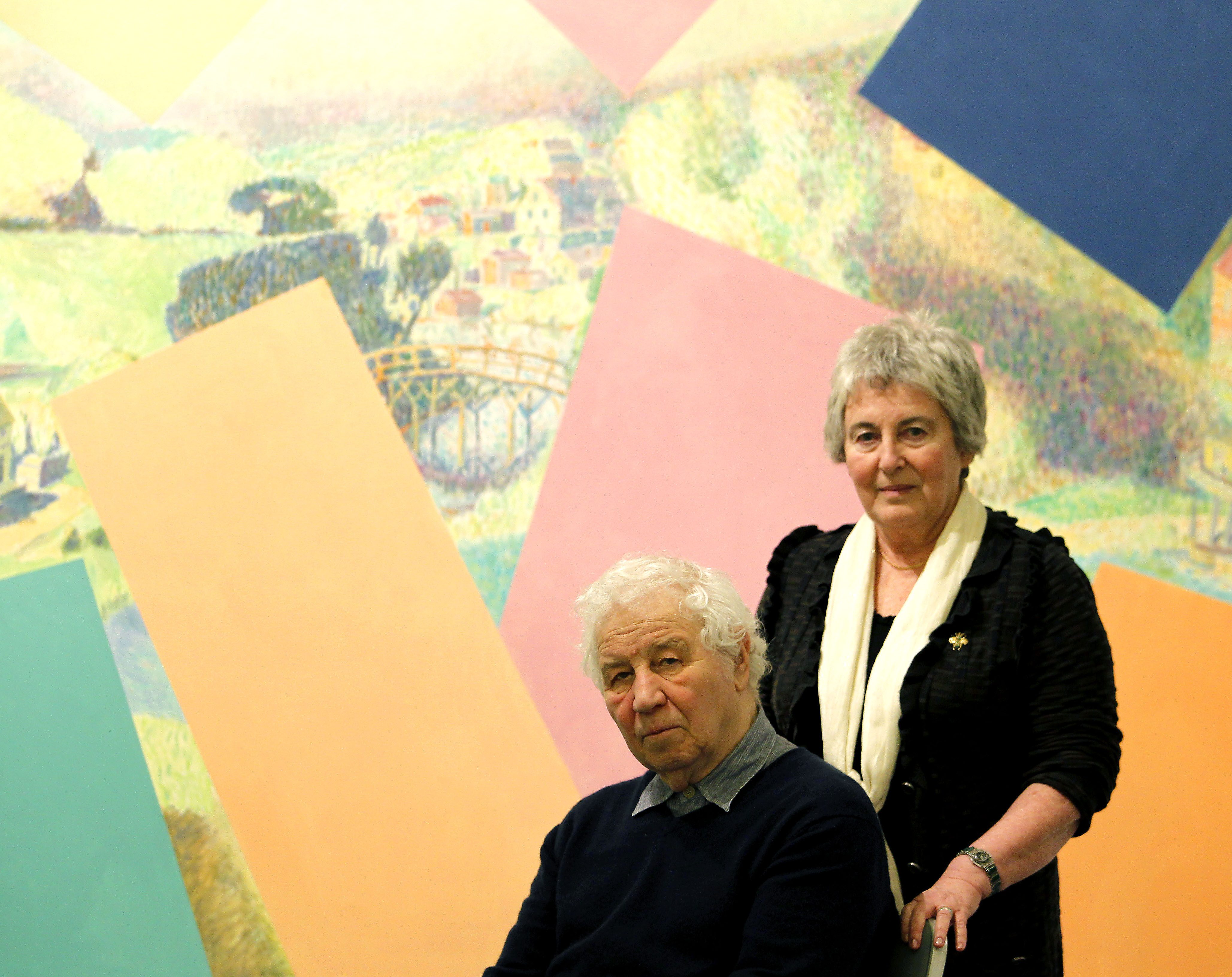The installation "The sick child" by the Russian artist Ilya Kabakov will be displayed in the Lia Rumma Gallery in Naples will host. Kabakov has reconstructed an apartment within the gallery comprising two small rooms. The first room, which one enters through a narrow door, represents a small petit-bourgeois drawing room furnished with traditional objects, rather ordinary and out of fashion: an old armchair, an old bookcase, an old table with a faded tablecloth.
The spectator continues towards the second room with the impression that there was nothing happening in the first room and nothing to see. One finds oneself facing a white curtain which divides the room. By moving the curtain, one comes into the second part of the room. In the middle of the room there is a bed with a pillow and a duvet; beside the bed is a plain chair, while on the other side is the main object in the installation: a puppet theatre lit from the inside, with moving puppets. The movement is accompanied by music and voices. The spectator can sit on the chair or even on the bed and watch the show. Clearly the theatre is for the sick child. The reassuring and composed atmosphere is designed to disappear rapidly.
Kabakov was born in 1933 in Ukraine. His artistic training took place in Moscow. For a long period, he earned his living as an illustrator of children’s books. Simultaneously he dedicated himself to painting in ironic imitation of the style of official culture and, in many cases, placed beside them written texts which further accentuated their ambiguity. In 1970 he began to make albums of drawings. These were followed from the beginning of the 1980s by his first installation projects which were smuggled abroad and were assembled by others.
In 1991 Ilya Kabakov, together with his wife and dose collaborator Emilia, moved to New York where he still lives and works. He developed the concept of “total installation” and since then has devoted himself completely to making large works set in rooms in which he continued to use main ideas contained in his albums or part of the albums. “Total installations” is characterized by a theatrical quality. By placing every single detail at the service of the complete illusion, it tries to create situations where the spectator acquires information through immersion in an atmosphere in which illumination, sound, the presence (often overwhelming) of visual elements and reading material combine in a form of continuity.




